What do landscapes say? @ Het Nieuwe Instituut
‘What Do Landscapes Say?’ explores how our conscious and unconscious response to and treatment of the landscape around us affects the development of the cities and societies we live in. Initiated by a cross-disciplinary Dutch and Russian research collective, Nomaos, all the participants have one thing in common: they were brought together organically through connections and friends of friends, and have worked together for more than a year to explore this question. I spoke to Yue Mao, the project initiator and coordinator, to hear more about the exhibits and to learn what this collaboration taught them about art, the environment, community and socially-engaged practice.

The exhibition
Walking through the two long corridors of the exhibition takes you on a winding path through forests, lakes, dunes, mines, empty village roads and botanical gardens, representing a diversity of landscapes not often experienced by visitors to Russia.
Beyond that, it raises the even more important challenge of approaching social and environmental sustainability in a way that they mutually reinforce the other. How could we understand the impact of social activity on the environment, and, in considering landscapes as autonomous, non-human voices, narrate how it might respond to its treatment by and interaction with society? How can a diversity of landscapes be included in discussions about social sustainability and identity formation? Could a social response to environmental responsibility change as a result? The contrast between the Dutch and Russian context in terms of environmental sustainability emerged in the differences in perception of individual and state responsibility. Rather than criticise, some of the artworks can be seen on a scale, from a description of the landscapes to suggestions of how people should, or shouldn’t, interact with or influence their environment.
Maria Malkova designed the project archive, whatdolandscapessay.com, and for the exhibition, website prints of the digital project archive, giving us a glimpse of the breadth and depth of material collected for the project (left). Dotted through the exhibition, Ksenia Kopalova’s Planting Structures takes us through Russian botanical, village and museum gardens, spaces where humanity organises nature (foreground of the photo left, also below). It reflects on the medium of illustration, a format where words lead and organise art, but in this exhibition, Kopalova lets the images do the talking.
Image by Vera Mennens.

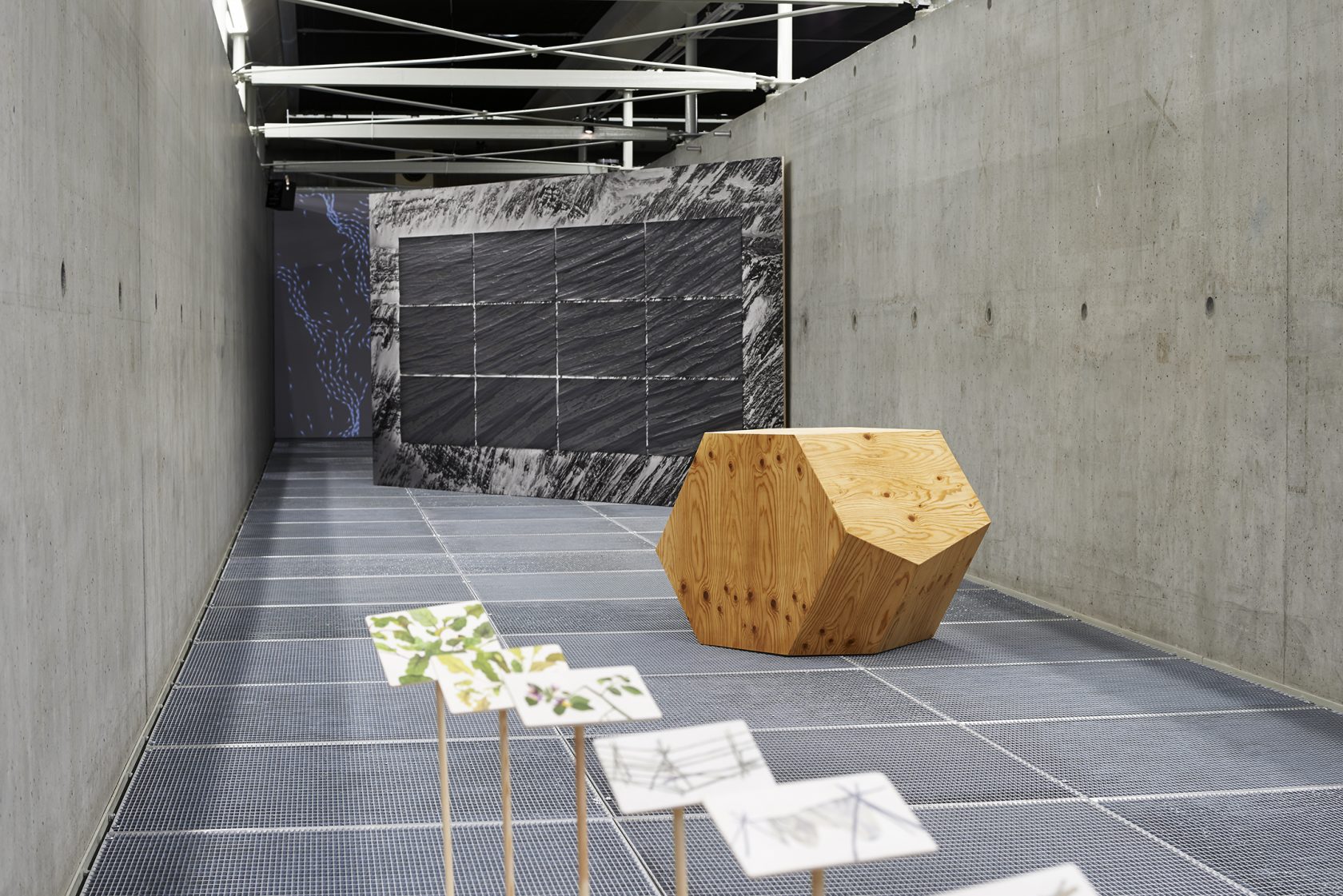
Maria Kremer’s Stones of Vyborg, two wooden representations of granite, raise issues of sustainable building resources, historical re-telling and cultural durability (above). Vyborg sits on the border between Russia and Finland. Its Karelian identities have been blended with Soviet Russian ones since the 40s. The Other Orebody, by Rachel Bacon, contrasts the speed of mining, economic exploitation and the slow process of its visual representation in art. The physical scars of mining carbon, whether in diamond or coal form, are reflected in 12 panels drawn in graphite laid on top of an image of a pock-marked Yakutsian mining landscape (above in background).
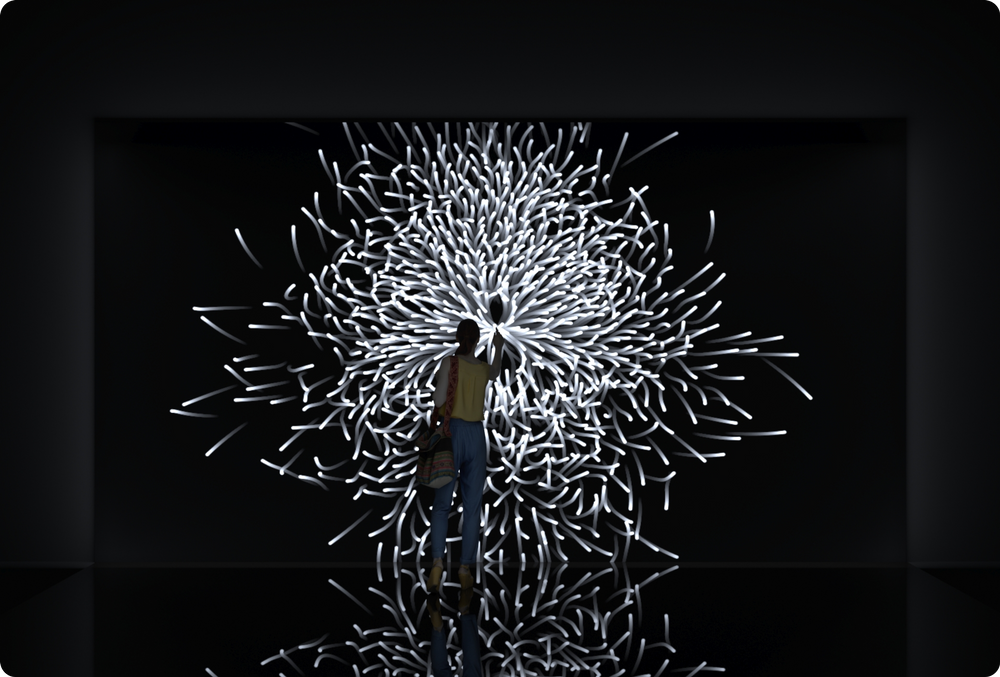
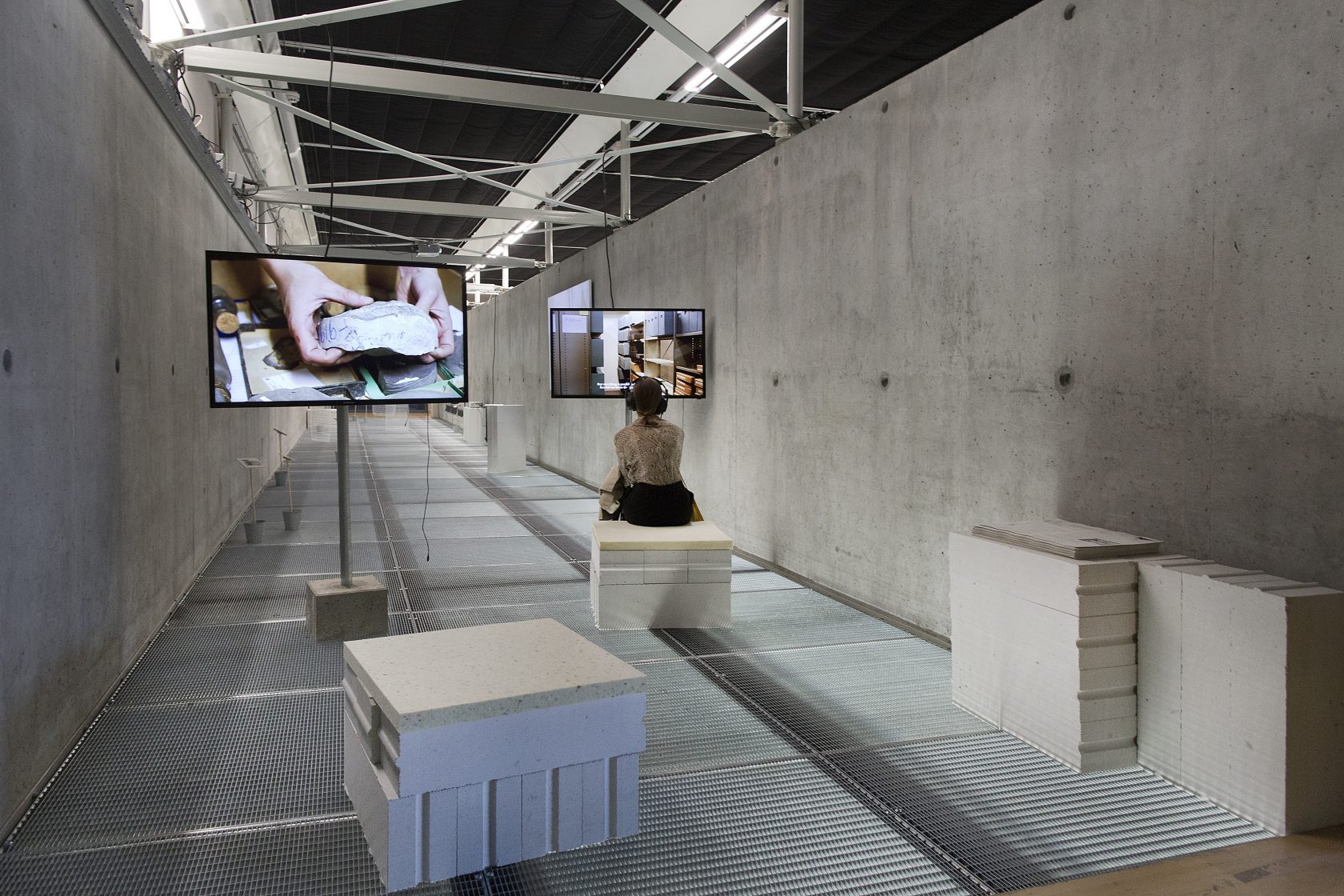
Nataly Lakhtina’s interactive installation Who is the creator? questions the influence of people in an ever-changing environment. While immersing the viewer in the sound of Kizhi, Karelia, the exhibit allows us to be a force of change that can influence algorithms and by extension, bird flight paths (above left). Vera Mennens’ The Three Stages presents a dialogue between her and the long-deceased biologist, Eli Heimans, a founder of the Dutch conservation movement. She follows in his footsteps, visits his grave, and explores his collections to explore past and contemporary interactions with our nature. Two slow-moving video chapters and a detailed essay illustrate her explorations of shifting dunes in Kaliningrad (Russia) and in the Netherlands (above right).
Yue Mao’s Entering, Knowing, Unknowing, Exiting juxtaposes a seemingly endless train journey with her personal experience of the Vyborg region, from its landmarks to the ground under her feet. At the same time, it is framed by prints and a recording that illustrate the linguistic, practical and cultural challenges of having a dialogue with and getting to know a place. The recordings of her trying to learn how to say local place names add humour and personality.
Image by Vera Mennens.
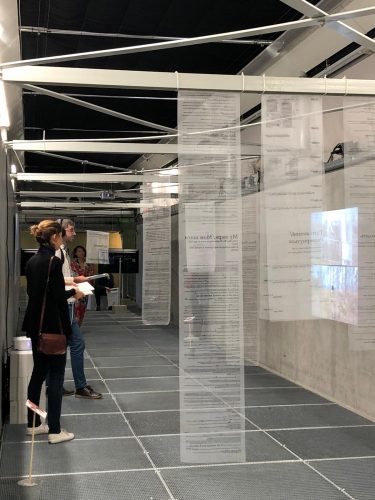
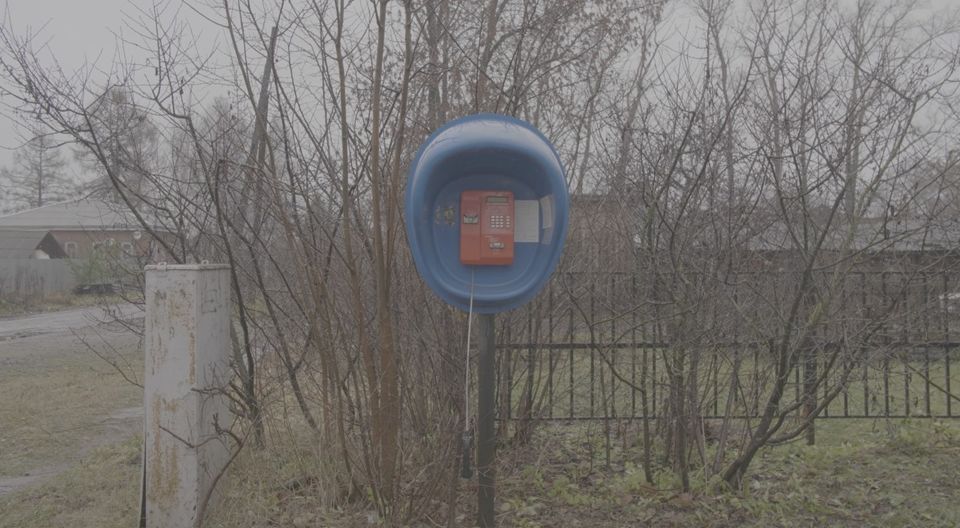
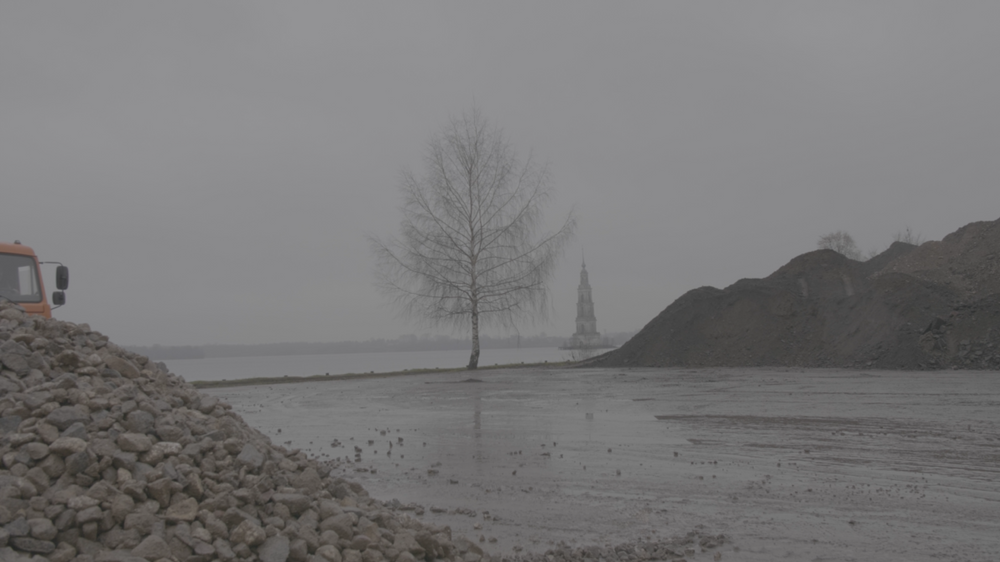
Polina Veidenbakh argues that urbanism has a lot to benefit from emotional data, and perhaps there was no better place to explore this than in Kalyazin, a city where its historial heart – except the top of its church tower – was submerged when a dam was created to provide Moscow with water. Her film, Landscape Elements explores what is left behind, and, alongside her workbook, a tool to guide an exploration of an area through its sectors, vectors, planes and space, presents a disconnect between the lake and its neighbours.

Radha Smith’s Out of Water, Out of Stone triptych (above, to the left) is a writing and graphic design collaboration, building on perspectives on limestone and water captured through surveys and interviews, with the writing flowing to create a rich, illegible sediment at the bottom of each piece.
Process and learning
Interaction with the locality and its people was built into the project from the beginning. Each artist tried to capture the emotional data of local interaction with the surrounding landscape, and Yue explained the challenges they encountered. The group had to communicate their understanding of and focus on landscape, which might have more depth and nuance than many would expect. For those who don’t speak Russian, there are linguistic barriers. For the Russian artists, there are geographic and socio-economic divides. More English-speaking, internationally-facing voices were likely to be included.
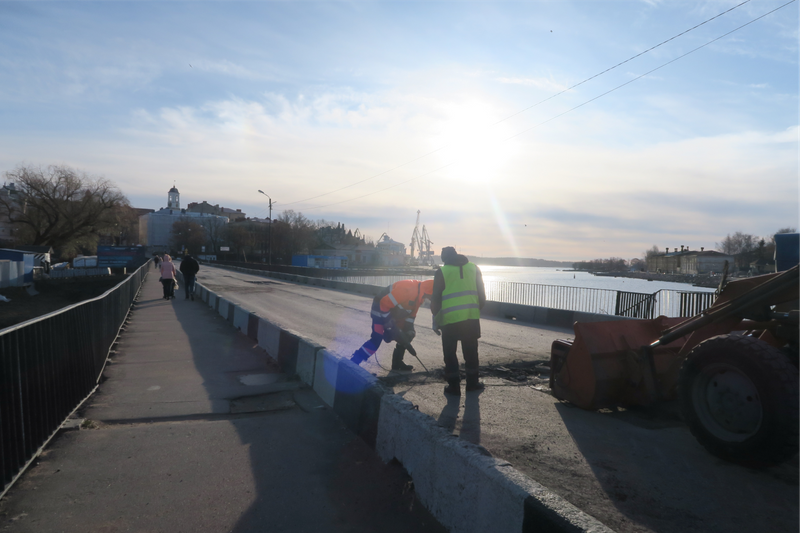
The project unearthed an understanding of how Russians generally engage with art. With a suspicion of propagandistic and political art, Russia is most comfortable with its art as a subjective representation of the artist’s vision, not as a tool or a process, like in the Dutch applied context. For the mostly Moscow-dwelling Russian research team members, they may have never considered exploring these regions in terms of what they could learn for their practice. Furthermore, for many in the group, the process challenged them to think of artistic process and not output, something which, as an architect, for example, there might be less space for in daily practice.
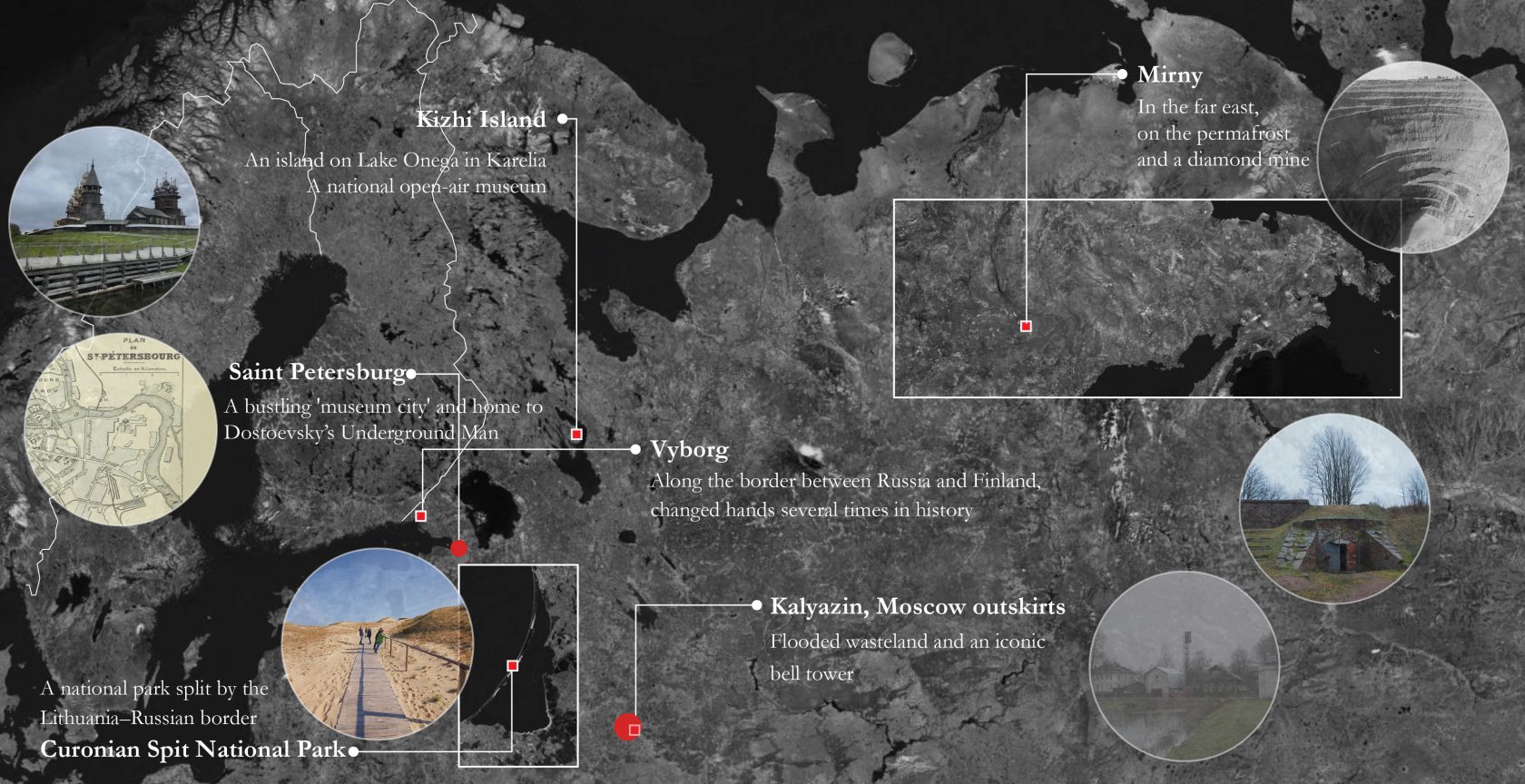
Future landscapes
Yue points out that community-inspired practice is often an unfinished process, with the artists rarely going back to the community to explain how their input was used, or presenting the artwork in the local context. This, and how to reframe the art in a Russian (political and social) context, remains an area for the research group to explore in their next interactions with each of the focus regions in reflective field trips that have been posted as a result of Covid-19. Looking forward, then, the exhibition continues not only in Na Peschanoy Gallery, in Moscow’s increasingly creative periphery, but also through ongoing individual research and forthcoming essays reflecting on the process. With this in mind, the exhibition represents the project at a moment in time, rather than at its end.
What do landscapes say? is on show until 15 October 2020 at Het Nieuwe Instituut in Rotterdam.
Also to be seen in Na Peschanoy Gallery in Moscow from 16 October until 15 November 2020.
What do landscapes say? is supported by the Creative Industries Fund of the Netherlands, the Mondriaan Fund and Stroom Den Haag.
Curator: Naomi van Dijk
Coordinator: Yue Mao, Polina Veidenbakh
Producer: Naomi van Dijck, Yue Mao
Exhibition designer: Maria Kremer
Graphic designer: Maria Malkova, Daria Nikulina
Contributing artists: Rachel Bacon, Ksenia Kopalova, Maria Kremer, Nataly Lakhtina, Maria Malkova, Yue Mao, Vera Mennens, Radha Smith, Polina Veidenbakh (websites, where available, listed below)